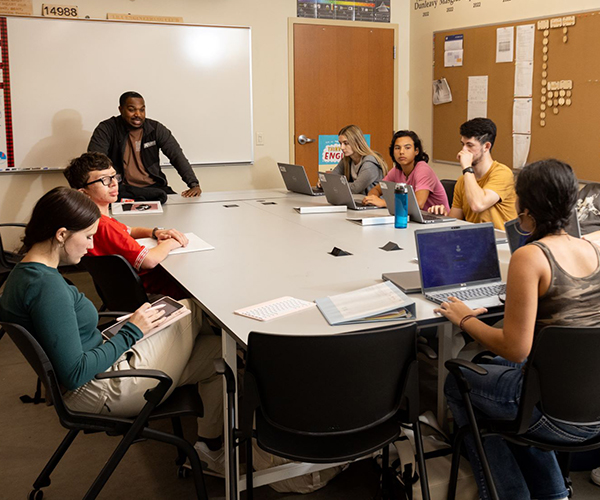Enhancing the Entire Landscape
The University of Akron
by Myra Orenstein | Sep. 28, 2005 | 4:00 AM
Last fall, students at The University of Akron helped celebrate the completion of a five-year, $300 million campus enhancement program that remade the state’s third-largest main campus.
This year’s freshmen are discovering that, concurrent with the brick-and-mortar initiative, The University of Akron also is busy enhancing its academic environment.
In 2004, UA completed its New Landscape for Learning initiative, which added nine new buildings, included major renovations to 14 others and created 30 acres of new green space. Among the newest buildings are a massive Student Recreation and Wellness Center/Athletics Field House, Student Union and Honors Complex.
The Honors Complex, a combination residence hall/academic facility, was built in response to the explosive growth of UA’s honors program, which has seen double-digit percentage increases in enrollment annually almost every year since 1999. In June 2005, UA’s board of trustees officially designated the program as the Honors College. More than 800 students were enrolled in the honors program last fall, and enrollment is projected to be more than 1,000 in 2005, according to Dale Mugler, Ph.D., dean of the Honors College.
In fact, demand for residency in the 300-bed Honors Complex is so high, the university is housing the overflow in an attached 120-room residence hall.
“When you have this kind of growth, you have to expect some challenges,” says Mugler. “Of course, we’re happy to have these kind of challenges.”
Another area of change is Summit College, the school’s former Community and Technical College, now headed by Stan Silverman.
“We have broadened the scope of the college,” Silverman says. “You can come to Summit College and get a certificate, an associate degree or a bachelor’s degree.”
Summit College is responsive to the needs of employers and adult students by offering degrees in such hot fields as emergency management, surgical technology and computer information systems. Silverman’s team also is developing new approaches to help traditional-age students who need additional support to reach their full potential.
“We’re creating an educational environment marked by individualized attention, relatively small class sizes and a faculty with a relentless dedication to teaching and learning,” Silverman says.
Under the leadership of President Luis M. Proenza, UA has made the integration of cutting-edge information technology into the educational process a priority.
One of the most compelling examples of how Akron is doing that is an initiative that provides professors with immediate classroom feedback from students using remote control devices called “clickers.” Begun as a pilot program with 3,000 students in the spring, the program was proven so effective that it has been expanded and is now available to all teaching faculty.
The technology, known as the Classroom Performance System (CPS), gives students the ability to anonymously send signals to instructors’ laptop computers that say, “Yes, I understand,” or “No, please back up and explain that again.” With CPS, instructors quickly recognize if key concepts are understood or if elaboration is needed.
“This helps instructors to better understand how students think, and it gives students a non-threatening way to give the instructor feedback on their learning,” says David A. McConnell, Ph.D., interim co-director of the Institute for Teaching and Learning at UA.
The clicker program continues Akron’s practice of being an early adopter of new educational technology. UA was one of the first public universities in Ohio to employ distance-learning classrooms and is a local leader in wireless technology. In 2004, Intel Corp. ranked UA seventh in the nation among wireless campuses, and cited it as one of only two schools to offer wireless access throughout its entire campus.
— MO
Trending
-
1
-
2
-
3
-
4
-
5










